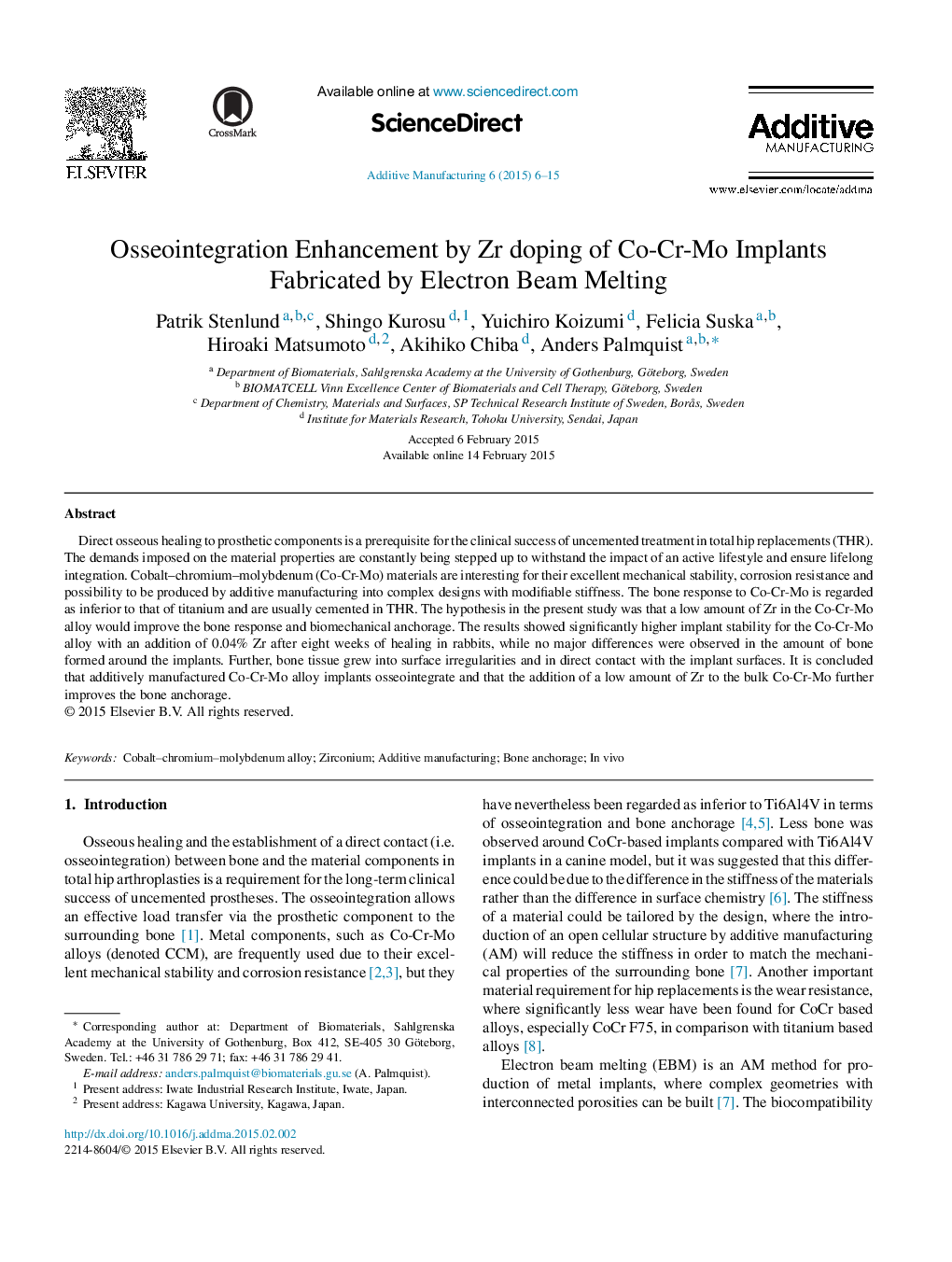| Article ID | Journal | Published Year | Pages | File Type |
|---|---|---|---|---|
| 808901 | Additive Manufacturing | 2015 | 10 Pages |
Direct osseous healing to prosthetic components is a prerequisite for the clinical success of uncemented treatment in total hip replacements (THR). The demands imposed on the material properties are constantly being stepped up to withstand the impact of an active lifestyle and ensure lifelong integration. Cobalt–chromium–molybdenum (Co-Cr-Mo) materials are interesting for their excellent mechanical stability, corrosion resistance and possibility to be produced by additive manufacturing into complex designs with modifiable stiffness. The bone response to Co-Cr-Mo is regarded as inferior to that of titanium and are usually cemented in THR. The hypothesis in the present study was that a low amount of Zr in the Co-Cr-Mo alloy would improve the bone response and biomechanical anchorage. The results showed significantly higher implant stability for the Co-Cr-Mo alloy with an addition of 0.04% Zr after eight weeks of healing in rabbits, while no major differences were observed in the amount of bone formed around the implants. Further, bone tissue grew into surface irregularities and in direct contact with the implant surfaces. It is concluded that additively manufactured Co-Cr-Mo alloy implants osseointegrate and that the addition of a low amount of Zr to the bulk Co-Cr-Mo further improves the bone anchorage.
